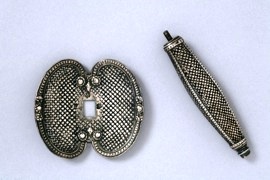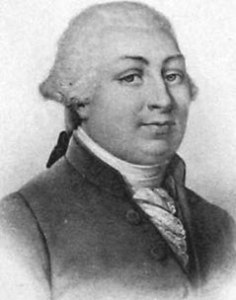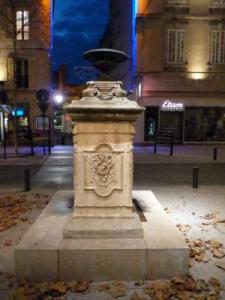In 1813, Captain Dillon, then a lieutenant on board the Hunter, had a miraculous escape from an attack by natives ashore in the Fiji Islands, in the company of a European, the Prussian Martin Bushart and an Indian lascar, Joe. But Bushart and Joe preferred to remain on a Pacific island and were landed on the small island of Tikopia, in the Solomons (4 km long, peopled by Polynesians) where they were welcomed.
Eleven years later, Dillon, who had become the captain of the trading vessel Saint Patrick, while returning from a voyage in the Pacific, found himself close to Tikopia and wished to make enquiries, on 13 May 1826, about what had happened to his former companions who were leading a peaceful life there.
Joe, having sold a silver sword guard to the ship’s armourer, explained to Dillon that it came from Mannicolo (Vanikoro), an island about 200 km away, where Joe had been 6 years previously and had met two old European men (probably survivors of the crews of the Lapérouse Expedition). Also on that island there were numerous traces of an old shipwreck. Dillon understood that they were the French navigator’s wrecks from 1788, but he did not have time to explore this nearby island.
Nature of the object found: dress sword hilt - a gift from L’Association Lapérouse Albi France to the Friends of the Lapérouse Museum
Having returned to Calcutta, the local authorities, accepting his reasoning, entrusted him with the ship Research, to explore Vanikoro and confirm the site of the Lapérouse Expedition shipwrecks. After various incidents, at the beginning of September 1827, he found himself first of all at Tikopia and collected objects of European origin from Vanikoro. Among these latter was the silver grip [the hilt is made up of three parts: the pommel, the grip and the guard] fitting the guard that he had already obtained, and an old sword blade that was very rusty and unusable. Chaigneau, the French Consul, and Dillon recognized a French-style sword hilt with inscriptions that were hard to read. The maker’s marks, however, allowed the Musée de la Marine to date its manufacture to between 1778 and 1779. These two related objects (guard and grip) in good condition, collected by Dillon at more than a year’s interval, were the first real proof of the site of the Lapérouse shipwreck at Vanikoro.
It relates to a “town sword”, also called a “dress sword”, civilian and not military, for self‑protection and as decoration for an officer when in plain clothes or a scientist on board. It is a simplified version of a military sword. It is therefore a personal item, that is somewhat superfluous and rather costly because it was made of silver, belonging to persons such as Messrs. Monneron or Lamanon, using it, for example, to visit the Governor of Saint Catherine in Brazil, when representing Lapérouse.
A second grip was found at Vanikoro, as shown on page 55 of the Association Salomon’s book, “A-t-on des nouvelles?”, after the discovery of the second wreck, that of La Boussole. This probably confirms that it is a scientist’s sword, rather than that of a naval officer, who would put on his uniform and military sword if he had official visits to make during the voyage.
(Left: This hydrant was erected in Salon-de-Provence and dedicated on August 15, 1859,
to Robert de Lamanon (1752-1787).
It is decorated on the sides of the jet column by plants (wheat, vines, flowers, fruits) and wearing a decorative vase metal . The water springs on the front of a female gargoyle.)



You must be logged in to post a comment.